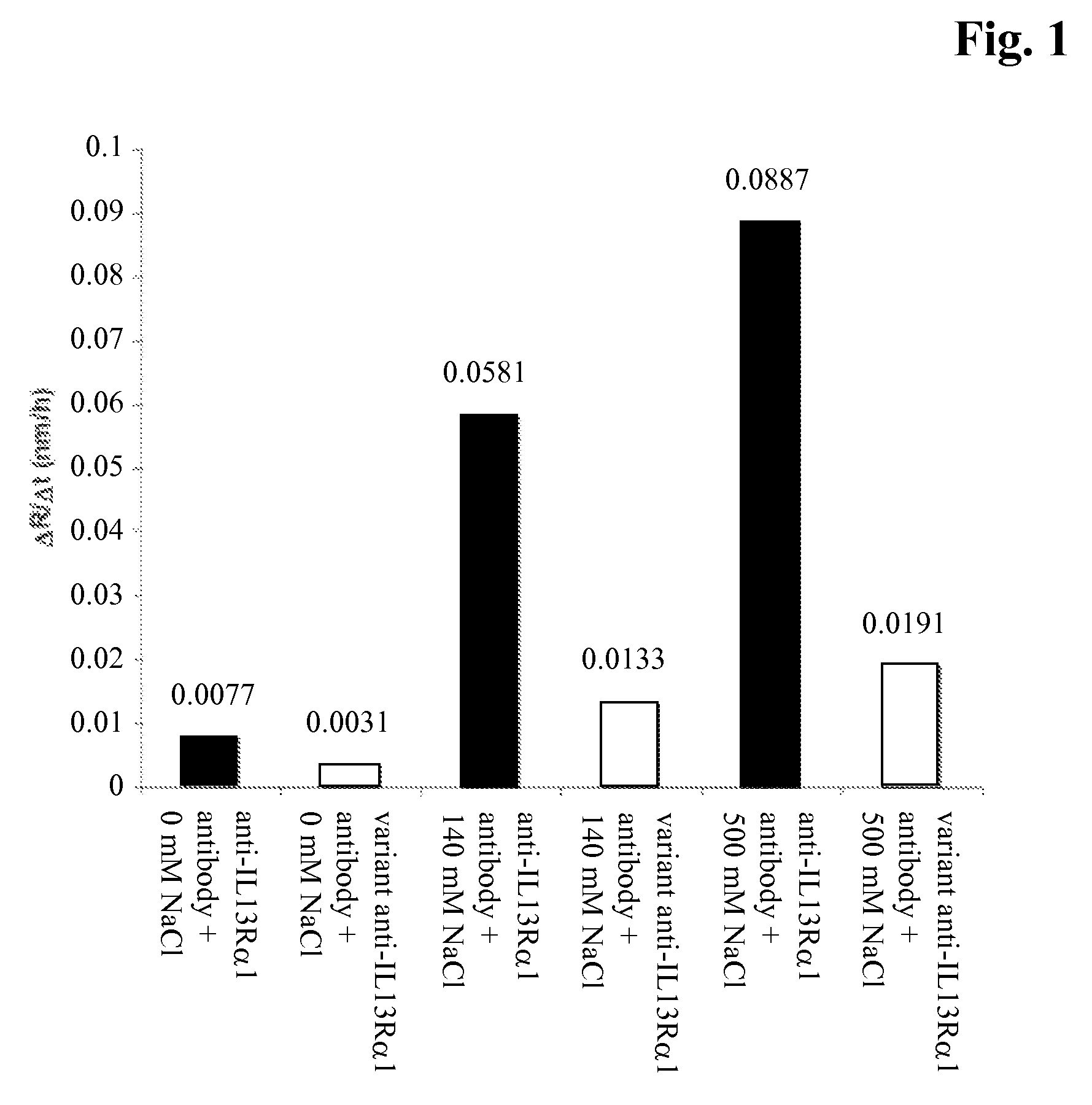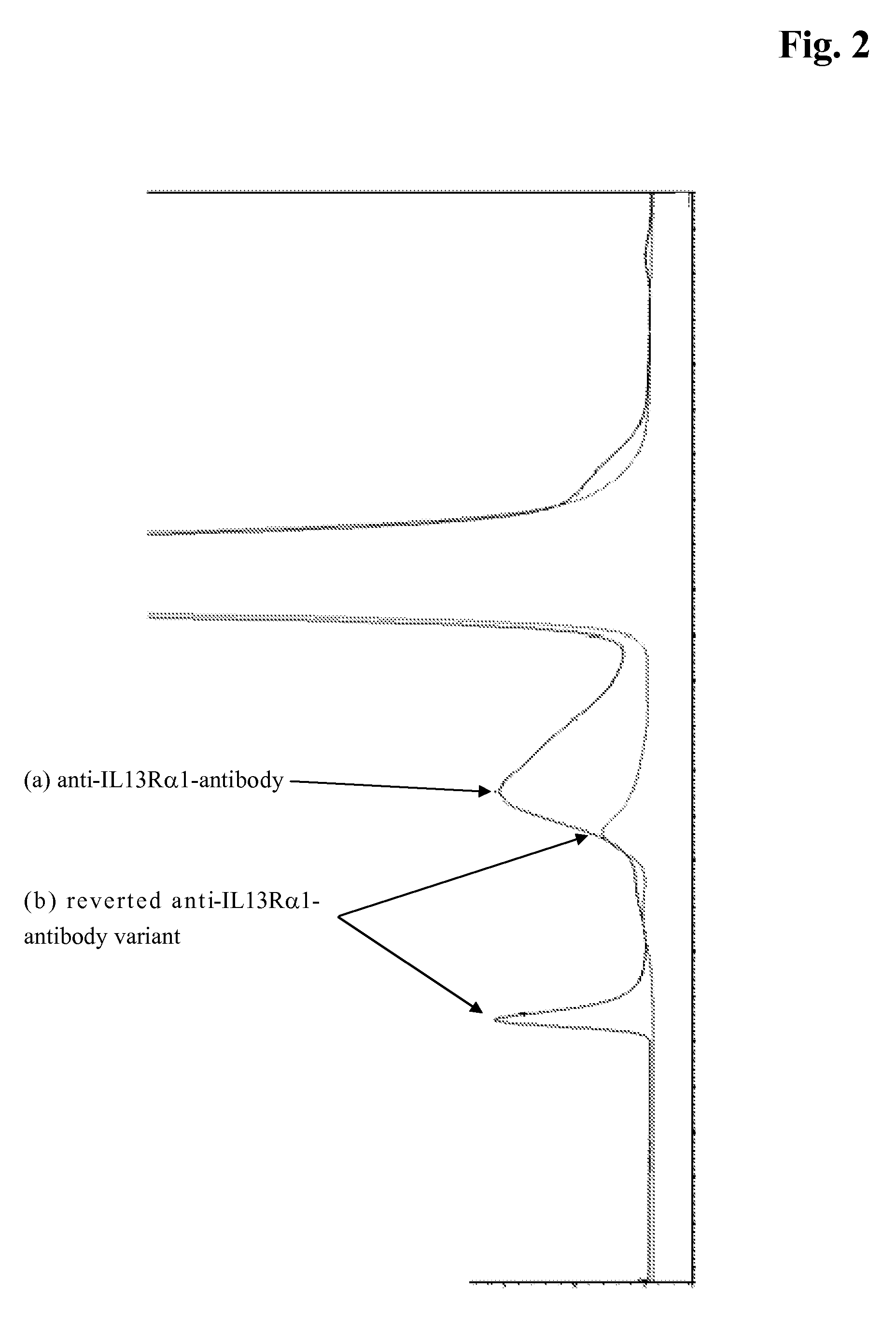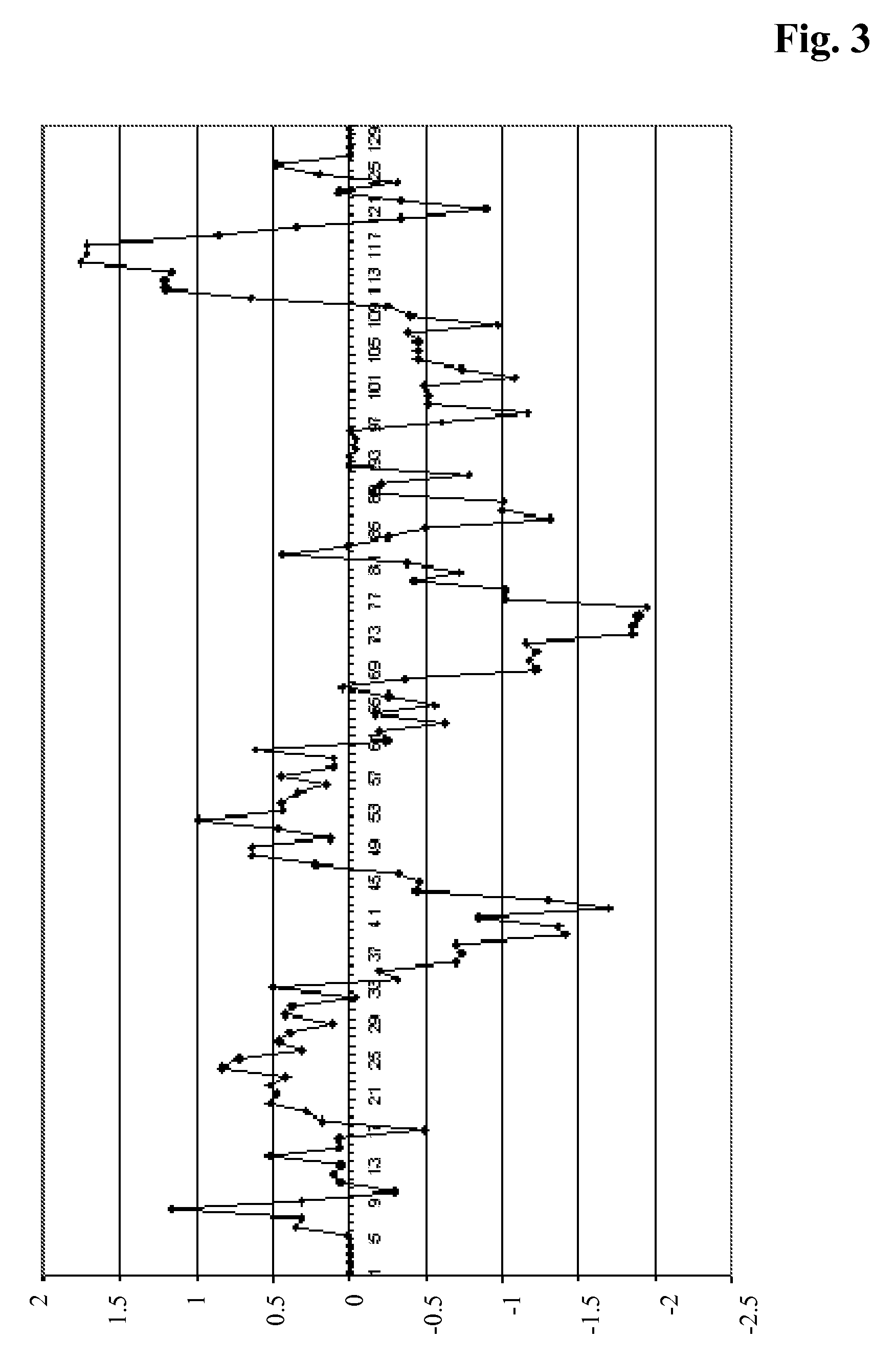Sequence dependent aggregation
a aggregation and sequence technology, applied in the field of sequence dependent aggregation, can solve the problems of complex downstream processing of immunoglobulins, and achieve the effects of reducing immunoglobulin aggregation, reducing aggregate content, and reducing the formation of aggregates
- Summary
- Abstract
- Description
- Claims
- Application Information
AI Technical Summary
Benefits of technology
Problems solved by technology
Method used
Image
Examples
example 1
Production of Variant Anti-IL13Rα1 Antibody
[0083]The anti-IL13Rα1 antibody light and heavy chain encoding genes were separately assembled in mammalian cell expression vectors. Thereby the gene segments encoding the anti-IL13Rα1 antibody light chain variable region (VL) and the human κ-light chain constant region (CL) were joined as were gene segments for the anti-IL13Rα1 antibody heavy chain variable region (VH) and the human γ1-heavy chain constant region (CH1-Hinge-CH2-CH3). General information regarding the nucleotide sequences of human light and heavy chains from which the codon usage is given in: Kabat, E. A., Wu, T. T., Perry, H. M., Gottesman, K. S., and Foeller, C. Sequences of Proteins of Immunological Interest, Fifth Ed., NIH Publication No. 91-3242 (1991). The transcription unit of the anti-IL13Rα1 antibody κ-light chain is composed of the following elements:[0084]the immediate early enhancer and promoter from the human cytomegalovirus (HCMV),[0085]a synthetic 5′-UT inclu...
example 2
Determination of the Rate of Aggregate Size Increase Via Dynamic Light Scattering
[0104]In order to follow aggregation over time, dynamic light scattering (DLS) measurements were conducted at regular time intervals. High salt concentrations stabilize hydrophobic interactions; hence hydrophobicity-related aggregation is expected to be more pronounced at high salt concentrations. The change of average particle size (Z-average radius) was monitored as a metric for protein aggregation (FIG. 1). Samples were dialyzed in buffer containing various amounts of NaCl (20 mM His / His-HCl at pH 6.0+0 / 140 / 500 mM NaCl) at a protein concentration of 30 mg / ml. DLS measurements were carried out on a Wyatt DynaPro plate reader in 394-well micro titer plates at a temperature of 50° C.
example 3
Stability Testing of Variant Anti-IL13Rα1 Antibody
[0105]Induction of high molecular weight compounds (HMWs) was performed by dialyzing samples in 20 mM His / His-HCl at pH 6.0, containing 0 or 500 mM NaCl, followed by incubation at 10° C. for 15 h. The formation of HMWs compared to the untreated samples was monitored by SEC HPLC (FIG. 2).
PUM
| Property | Measurement | Unit |
|---|---|---|
| concentrations | aaaaa | aaaaa |
| concentrations | aaaaa | aaaaa |
| concentration | aaaaa | aaaaa |
Abstract
Description
Claims
Application Information
 Login to View More
Login to View More - R&D
- Intellectual Property
- Life Sciences
- Materials
- Tech Scout
- Unparalleled Data Quality
- Higher Quality Content
- 60% Fewer Hallucinations
Browse by: Latest US Patents, China's latest patents, Technical Efficacy Thesaurus, Application Domain, Technology Topic, Popular Technical Reports.
© 2025 PatSnap. All rights reserved.Legal|Privacy policy|Modern Slavery Act Transparency Statement|Sitemap|About US| Contact US: help@patsnap.com



